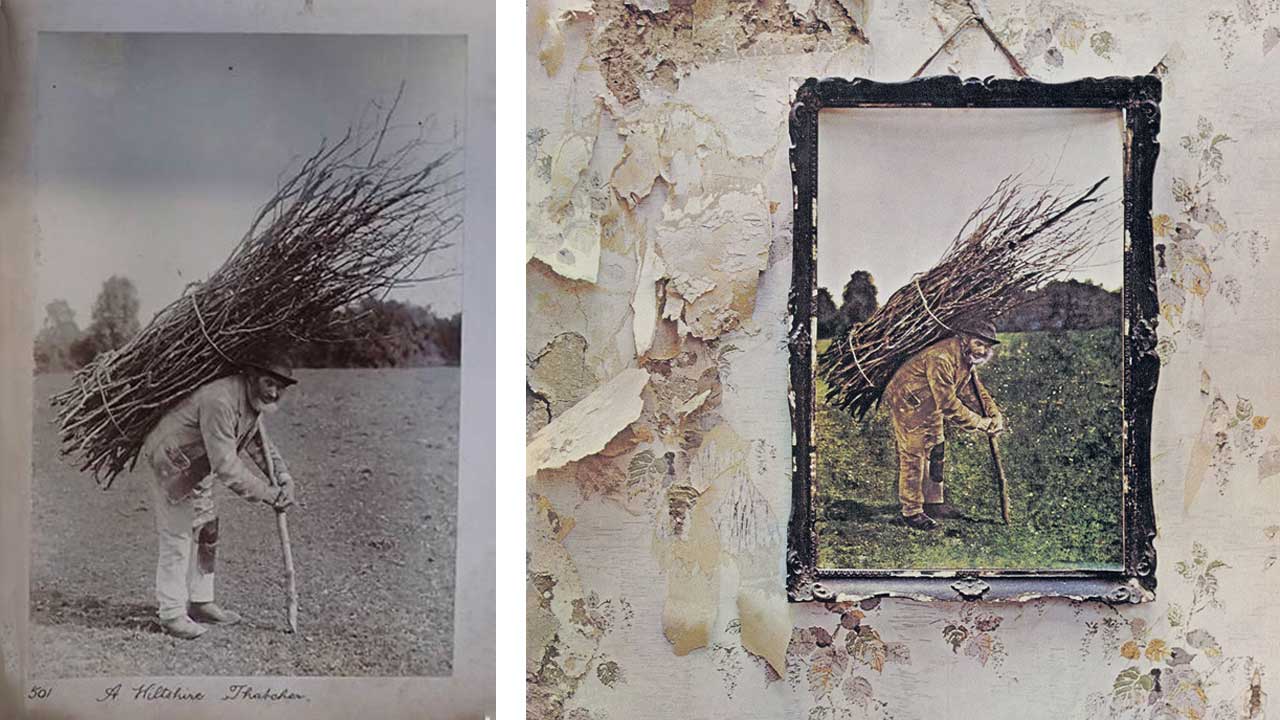
Led Zeppelin's iconic fourth album was released 52 years ago today (November 8), and its cover art has been the subject of much conjecture in the decades since, with talk of runes, tarot and the occult. One of the greatest mysteries has been the identify of the painted figure on the front cover, a stooped man with a burden of sticks on his back, commonly referred to as 'The Hermit'.
The original story goes that Robert Plant found the painting in a second-hand store in Reading, Berkshire, while on his way to recording sessions at Headley Grange in Hampshire. Some have claimed that the old man is Henry "Brusher" Mills, a well-known Victorian-era snake catcher who lived in Hampshire's New Forest, while Jimmy Page reportedly noted the figure's resemblance to ‘Old George’ Pickingill – who had first instructed Aleister Crowley in the occult – and made the painting a feature of the cover art. Typically, Page has been reluctant to provide further detail.
"‘The cover was supposed to be something that was for other people to savour rather than for me to actually spell everything out," he told The Times in 2010. "Which would make the whole thing rather disappointing on that level of your own personal adventure into the music."
Now the mystery has been solved, after the original photograph on which the painting was based was found during research for an upcoming exhibition at the Wiltshire Museum in Devizes. The picture was discovered in an old album by Brian Edwards, a Visiting Research Fellow with the Regional History Centre at the University of the West of England, who, being a Led Zeppelin fan, recognised the image immediately.
"Led Zeppelin created the soundtrack that has accompanied me since my teenage years," says Edwards. "So I really hope the discovery of this Victorian photograph pleases and entertains Robert, Jimmy, and John Paul."

Further research was able to able to suggest likely candidates for both the photographer and his subject. A part signature matching the writing in the album suggests the man behind the camera was photography teacher Ernest Howard Farmer (1856-1944), while the stooped figure is likely to be Lot Long – also known as Lot Longyear – a thatcher (a craftsman who installs traditional thatched roofing), from the small town of Mere in southwest Wiltshire. Lot was born in 1823 and died in 1893.
Farmer's photograph will be included in an exhibition, Wiltshire Thatcher: a Photographic Journey through Victorian Wessex, which is scheduled to run at the Wiltshire Museum in spring 2024.
"Through the exhibition, we will show how Farmer captured the spirit of people, villages and landscapes of Wiltshire and Dorset that were so much of a contrast to his life in London," says David Dawson, Director of the museum. "It is fascinating to see how this theme of rural and urban contrasts was developed by Led Zeppelin and became the focus for this iconic album cover 70 years later."







